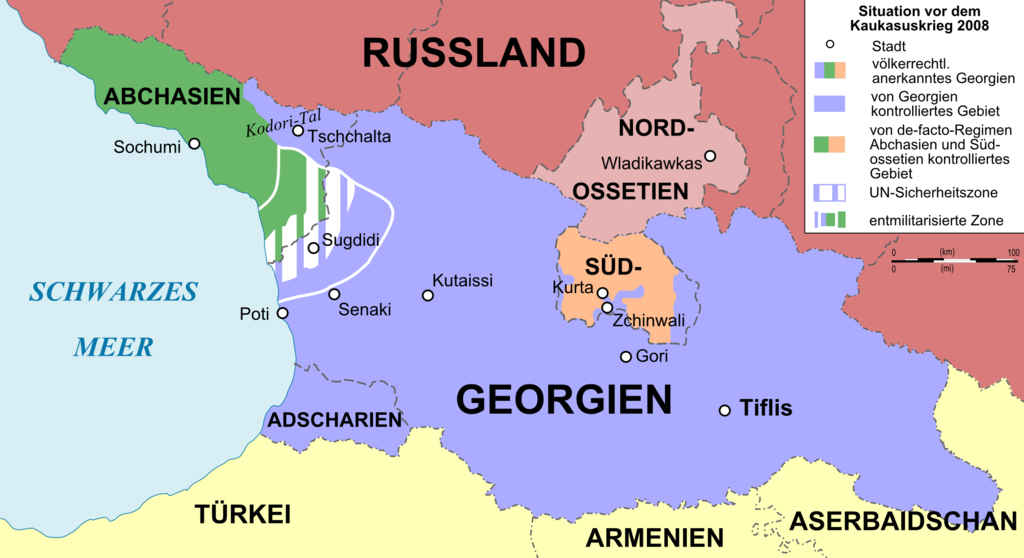
The frozen conflict between Russia, Georgia and South Ossetia
Russia is known for defending its geopolitical interests by force, if necessary. A tried and tested means of achieving this goal is the anachronistic imperialism, of which Russia makes use time and again. Besides the still ongoing war in Ukraine, the Russo-Georgian War is another example from recent history. The object of the dispute is the region of South Ossetia, which lies immediately south of the crest of the Great Caucasus. South Ossetia is considered part of Georgia under international law but is de facto independent. The conflict between Georgia, South Ossetia, and Russia is considered a frozen conflict. Such a conflict is characterized by the fact that fighting - mostly over territory - has ended, but any agreements on a ceasefire do not sufficiently satisfy all parties. Such a situation is considered unsafe and unstable, and can quickly escalate again.
A look back
The disputes between Georgia and South Ossetia date back to the beginning of the 20th century. While Georgia sought the incorporation of South Ossetia, South Ossetia demanded independence. When Georgia broke away from the Russian Empire in 1918, a violent attempt to separate South Ossetia from Georgia occurred in the wake of the October Revolution. South Ossetian separatists allied with the Bolsheviks and attacked the local Georgian administration, as well as anyone who stood in their way.[1] The Georgian army put down the uprising, with around 5,000 Ossetians losing their lives; many as a result of hunger and disease.
The road to war
The Russo-Georgian War began on August 7, 2008 and ended on August 16, 2008. Open fighting between soldiers of the Georgian army and South Ossetian militia units began as early as July 2008. The conflict escalated when Georgian units launched an offensive on the night of August 8 to regain control of the contested regions. This offensive is considered to have triggered the war. Russian troops intervened by pushing back the Georgian army and advancing into the Georgian heartland. The Georgian government surrendered and announced on August 10, 2008, that it had withdrawn its troops from South Ossetia.[2] On August 26, 2008, the Russian government recognized Abkhazia and South Ossetia as independent states.[3]
The fact that Russia had been interested in the seceded regions for years was demonstrated by the granting of Russian citizenship to residents of Abkhazia and South Ossetia. As a result, Moscow felt justified in intervening to protect its citizens in the event of an invasion.
Our decades of experience in monitoring political conflicts below the threshold of war make MBI CONIAS data unique. The high number of these conflicts and their complex modes of action require a great deal of knowledge to identify their effects at an early stage. Constant further developments and additions continuously increase the benefit for our customers.
About the author:
Lars Klöffer
CONIAS Risk Intelligence
Michael Bauer International GmbH
Sources:
[1] Heinz Fähnrich: Geschichte Georgiens. 1. Auflage. BRILL, Leiden 2010, ISBN 978-90-04-18450-3, S. 456.
[2] https://www.focus.de/politik/ausland/kaukasus/georgische-armee-weicht-zurueck-suedossetien_id_2112963.html.
[3] https://web.archive.org/web/20081010201134/http://kremlin.ru/eng/speeches/2008/08/26/1543_type82912_205752.shtml.
Image Source: Don-kun, Bourrichon, CC BY-SA 3.0, via Wikimedia Commons


